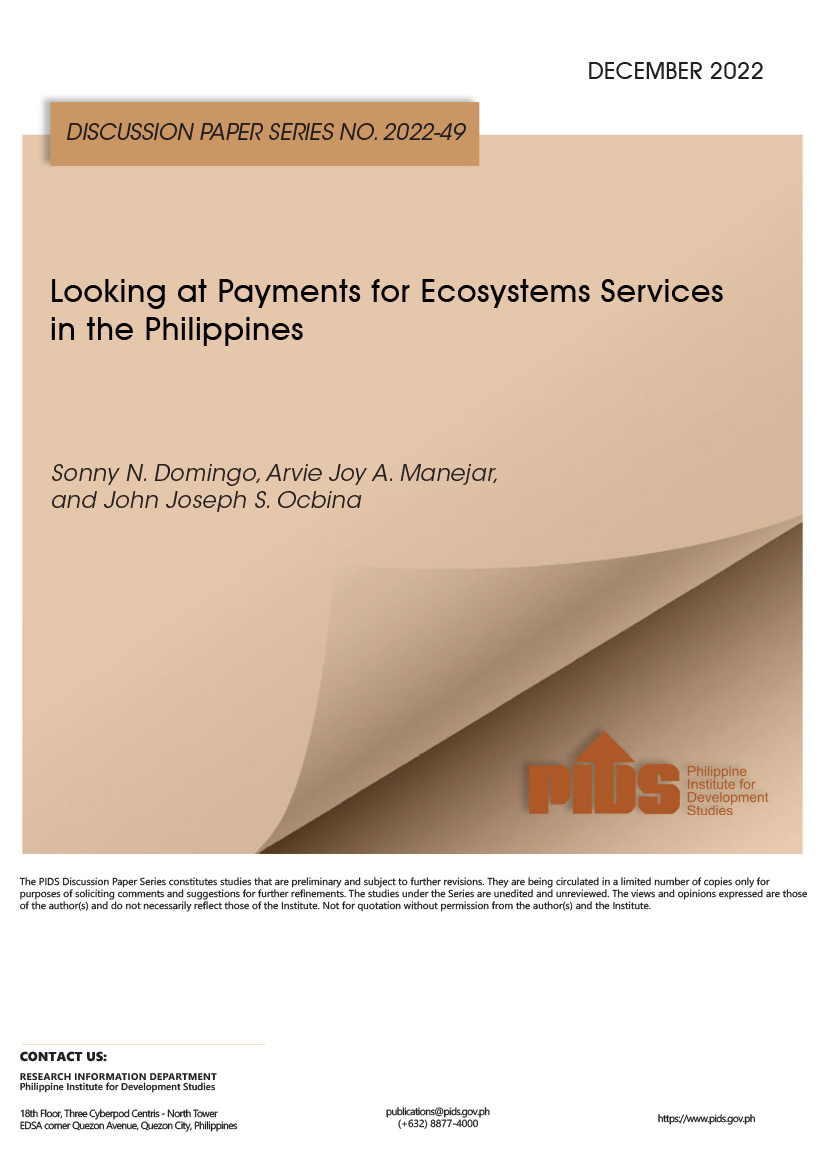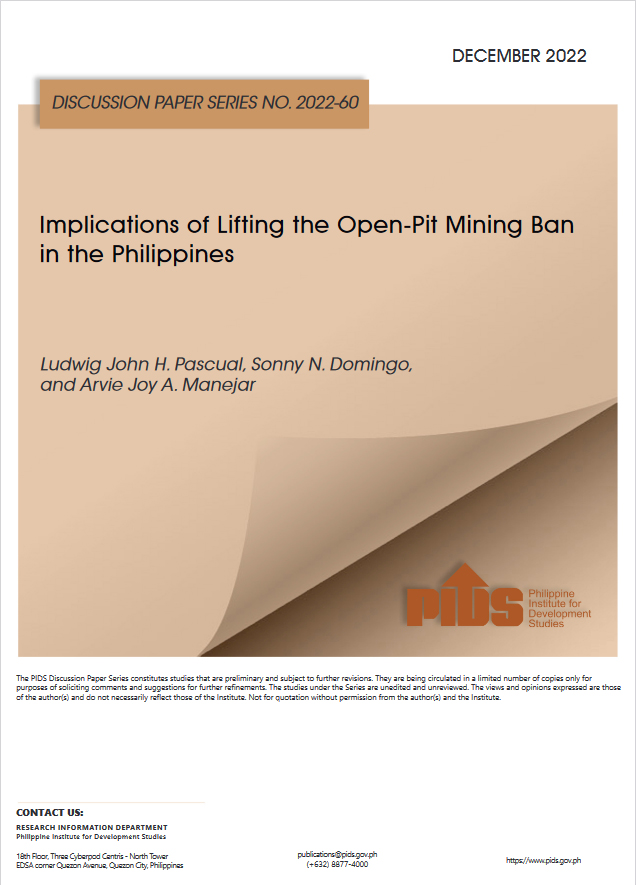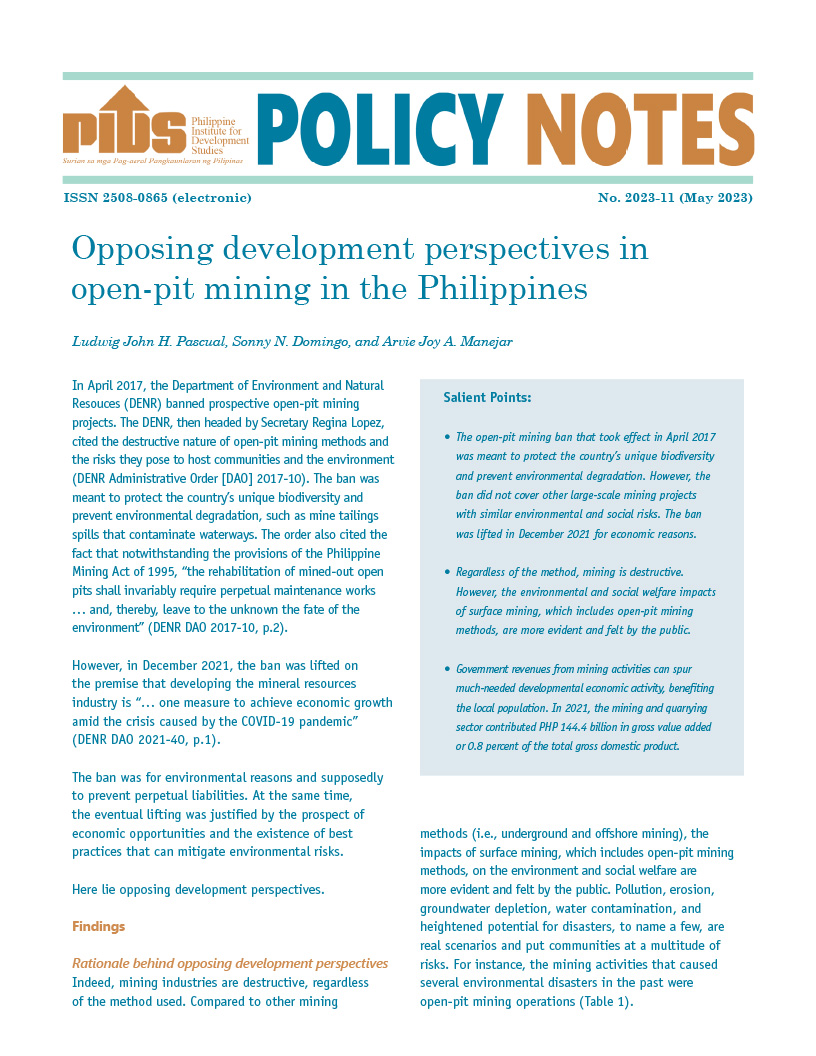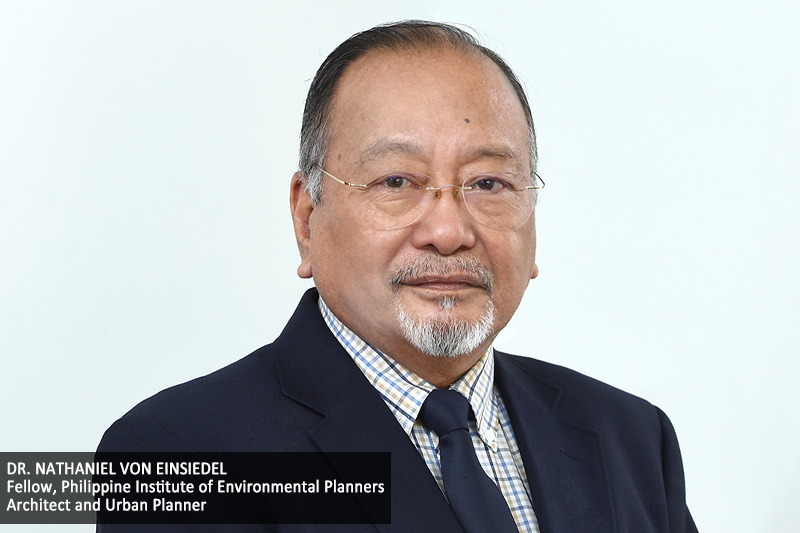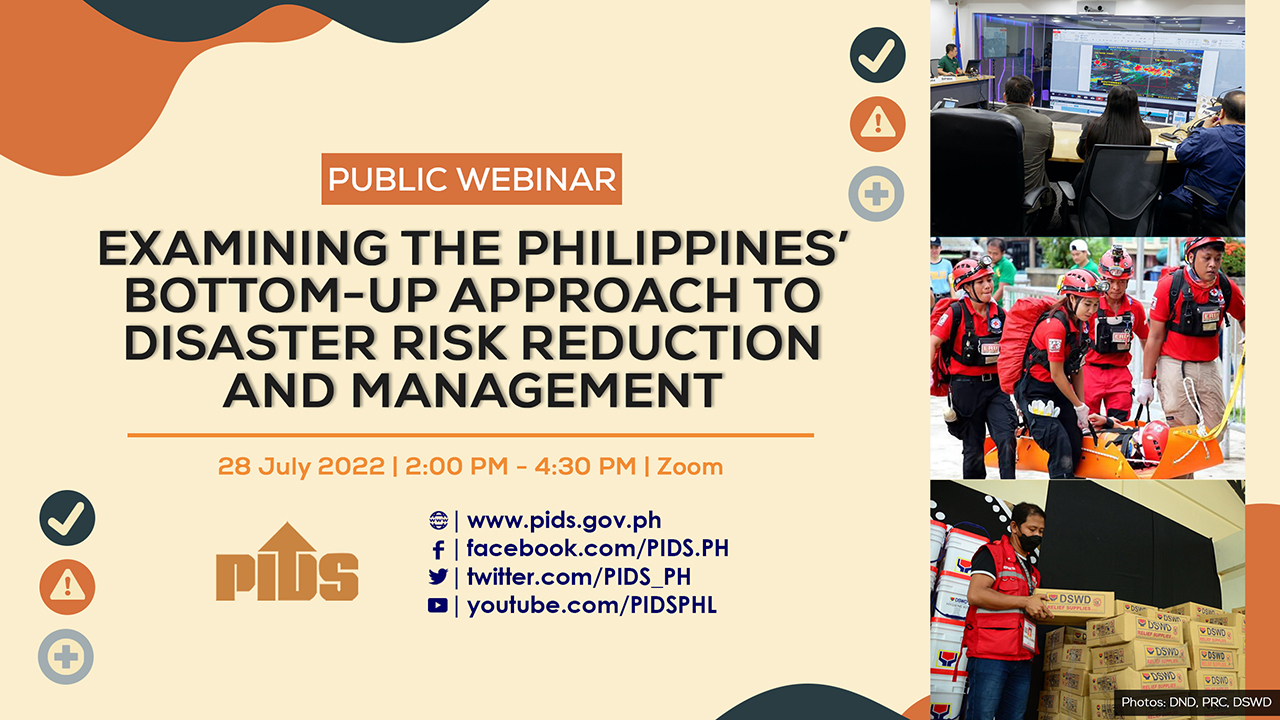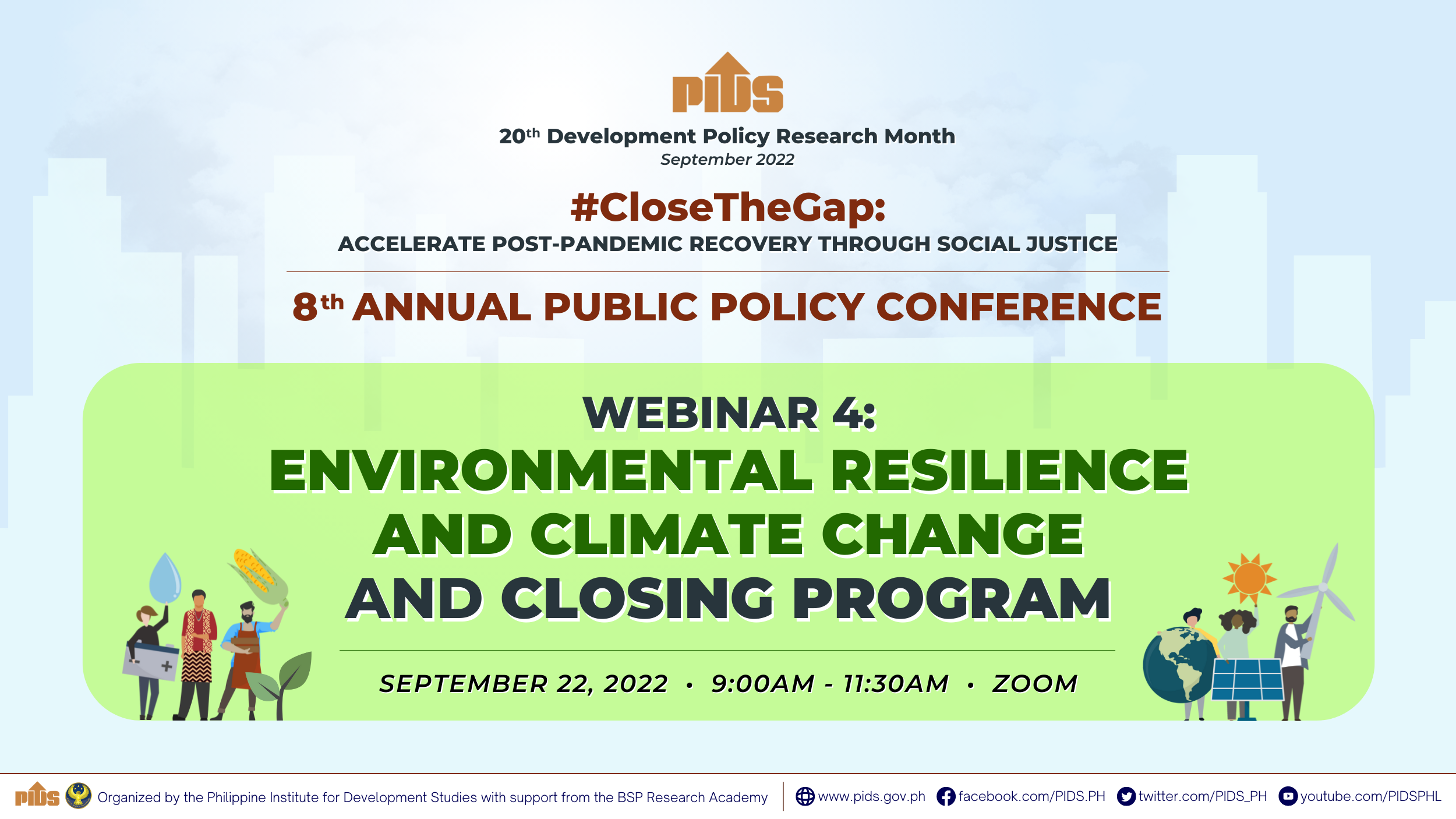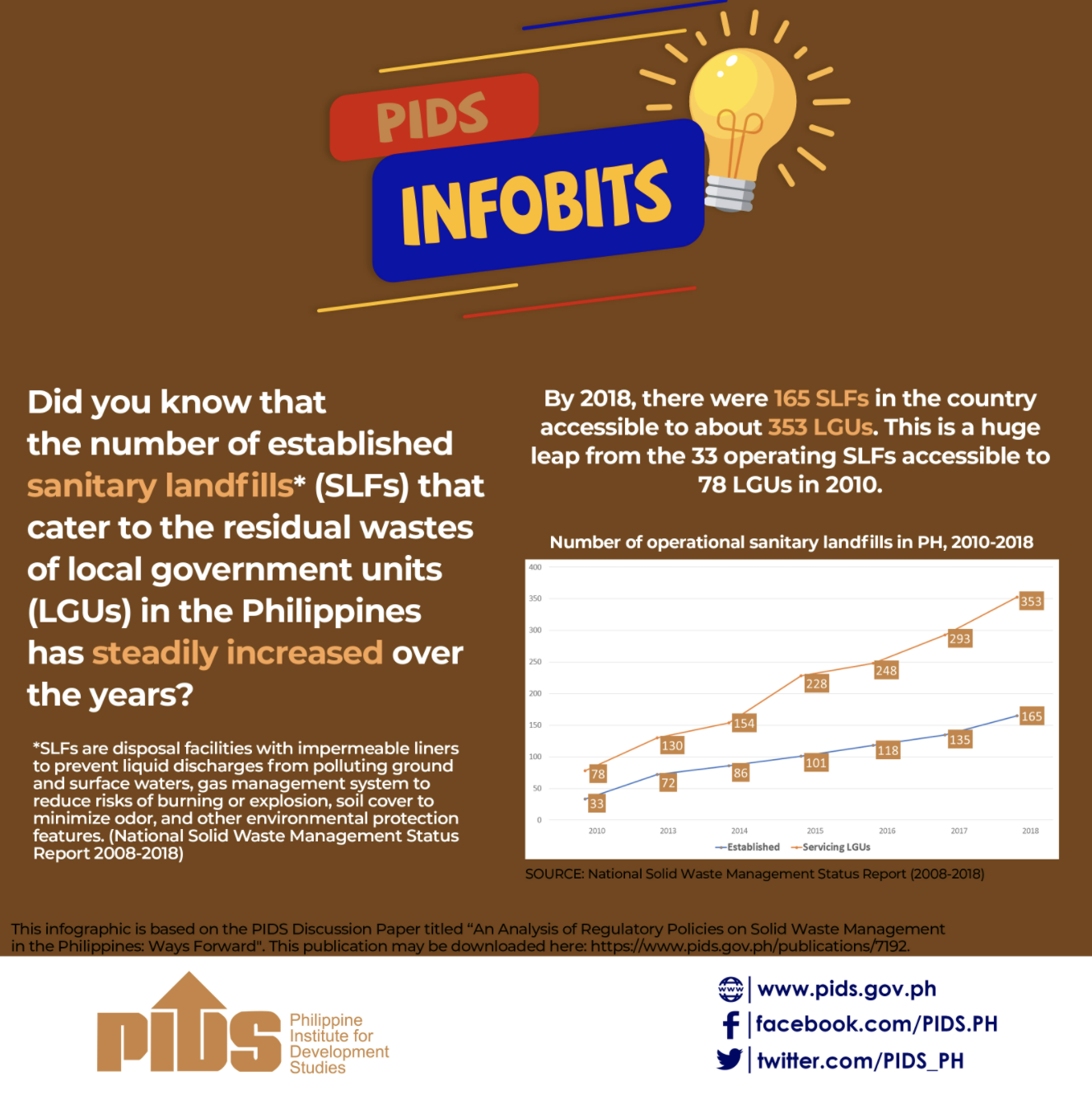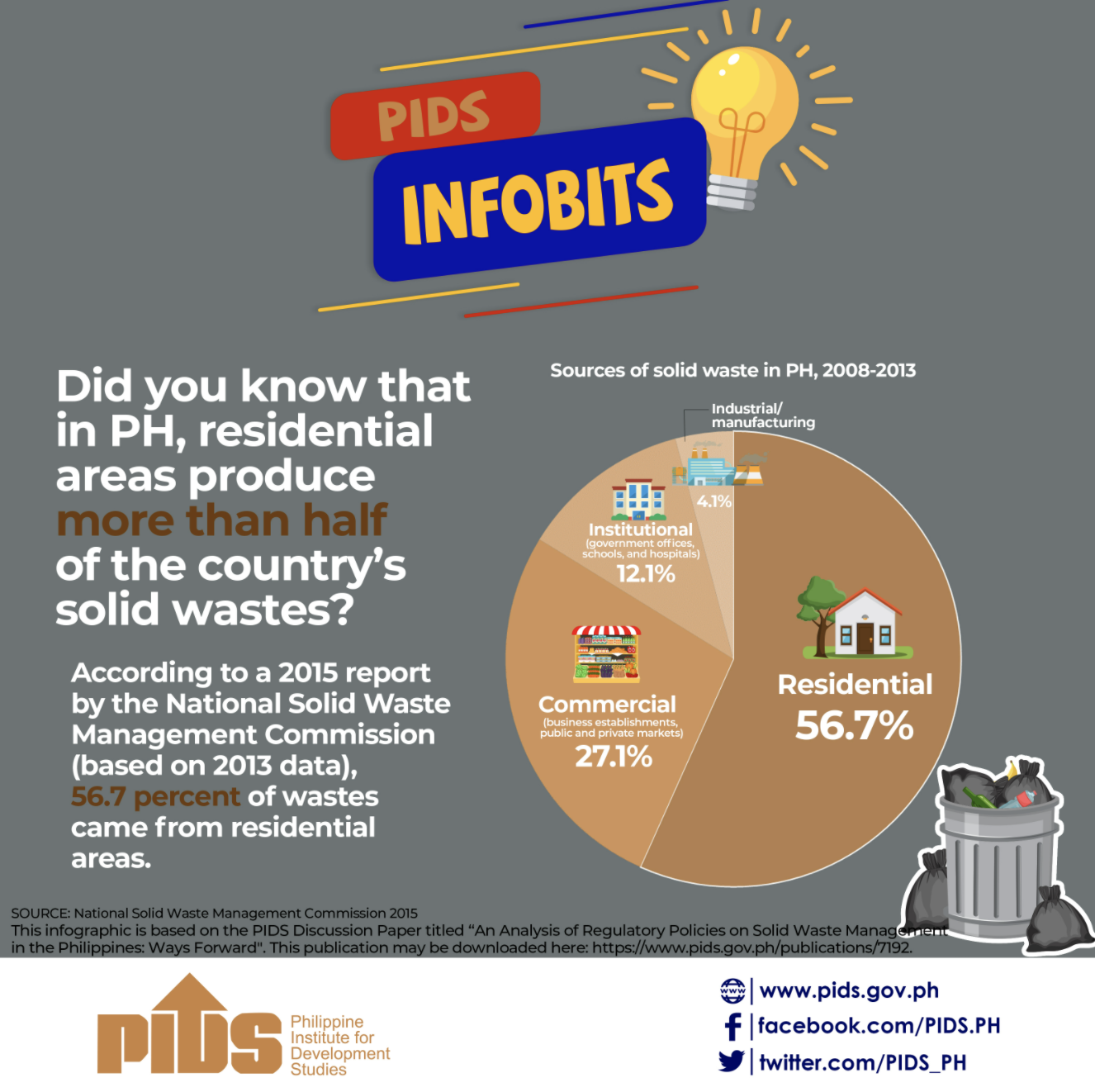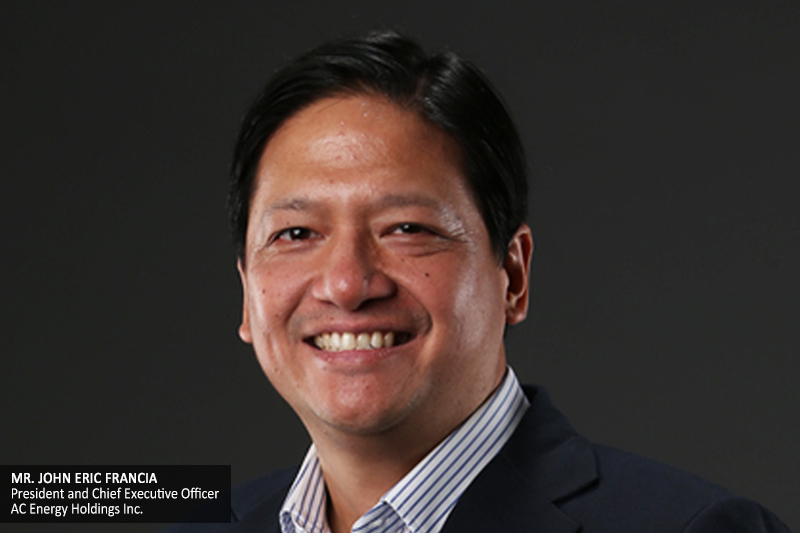
There have been a “concomitant tightness in the supply in the power sector” and “an increased rate of outage of coal plants in Luzon” in recent years.
This was emphasized by Mr. John Eric T. Francia, president and chief executive officer of AC Energy Holdings Inc., during the third of the four-part webinar series of the 7th Annual Public Policy Conference (APPC), which featured the topic “Green and Inclusive Recovery”. The APPC is the culminating activity of the Development Policy Research Month organized by the Philippine Institute for Development Studies every September.
“In 2016, outage rates, planned and unplanned, were at the 14 percent level. These crept up consistently and, in early 2021, reached the 20-plus percent level, leading to the tightness in supply. Coal plants account for about half of our capacity needs,” Francia, a discussant at the webinar, explained.
According to him, the power sector faces several challenges in the short to medium term. These include the decline of the Malampaya plant, delay in the construction of power plants due to COVID-19 restrictions, grids constraints, aging of power plants, a strong rebound in fuel price, and price volatility.
This is where renewable energy will come into play.
“This is the decade for renewables to scale up. The good news is that the government has reinforced its stated goal of getting the renewables’ share of output from where it is today (which is 21%) to 35 percent by 2030,” he pointed out.
Francia said this goal could be attained if the Philippines would scale up its investment in renewables.
“We need to build around 20 GW (or 20,000 MW) of renewable energy over the next decade. We think this is going to be driven by solar and wind,” he said.
“Solar is the lowest levelized cost of electricity…it is flexible as it can be installed anywhere—even on rooftops,” Francia noted.
“It is very predictable. The intermittency can be addressed by battery storage. It produces at the right time of the day and year when we have peak demand,” he added.
However, he stressed that to substantiate the government’s goal to achieve the 35-percent target by 2030, one of the more critical policies is the Renewable Portfolio Standards (RPS), which is part of the Renewable Energy Law.
As an important enabler, RPS mandates a quota system where market participants, distribution utilities, and retail electricity providers are required to source a certain percentage of their electricity demand from new renewable sources.
He added that enabling policies are also needed to attain the target and complement the RPS policy.
Among these are the green energy auction, green energy option program, renewable energy certificate market, and reserve market.
Francia mentioned that the latest plan under the green energy auction mechanism is “to do a kind of feeding tariff system where the generators will sell to the grid and be promised a feeding tariff. “The difference here is that the generators will have to bid through an auction, and whoever has the lowest tariff will qualify for this green energy option or a modified feeding tariff,” he said.
The green energy option program lowers the threshold set for suppliers to sell to customers. Francia said that under this program, “those selling renewable energy can already sell up to the 100 kW customers, which increases the market size, especially for green energy providers. This enabling policy encourages renewable energy providers like AC Energy to address a broader market.”
Meanwhile, “the renewable energy certificate market will allow trading of the green attributes or the renewable energy certificates produced by various renewable energy power plants that are not necessarily supplying with respect to the feeding tariff or the green energy auction.”
The reserve market, on the other hand, will let companies “to make their own assessment of the market and build the capacity ahead of an expected demand, knowing that there will be a market to sell to”.
“Given the developments on the regulatory front, there is a very strong appetite [for sustainable investment in the private sector]. We've already seen many major power companies announcing plans to invest big in renewables. This is supported by the global market’s strong demand for green social bonds and sustainability-oriented investments,” Francia concluded.
Watch the video of this seminar at https://www.facebook.com/watch/live/?ref=watch_permalink&v=573894353813688 or https://www.youtube.com/watch?v=XeSs56RdRLE.
For more videos of PIDS events, go to https://www.pids.gov.ph/videos.
This was emphasized by Mr. John Eric T. Francia, president and chief executive officer of AC Energy Holdings Inc., during the third of the four-part webinar series of the 7th Annual Public Policy Conference (APPC), which featured the topic “Green and Inclusive Recovery”. The APPC is the culminating activity of the Development Policy Research Month organized by the Philippine Institute for Development Studies every September.
“In 2016, outage rates, planned and unplanned, were at the 14 percent level. These crept up consistently and, in early 2021, reached the 20-plus percent level, leading to the tightness in supply. Coal plants account for about half of our capacity needs,” Francia, a discussant at the webinar, explained.
According to him, the power sector faces several challenges in the short to medium term. These include the decline of the Malampaya plant, delay in the construction of power plants due to COVID-19 restrictions, grids constraints, aging of power plants, a strong rebound in fuel price, and price volatility.
This is where renewable energy will come into play.
“This is the decade for renewables to scale up. The good news is that the government has reinforced its stated goal of getting the renewables’ share of output from where it is today (which is 21%) to 35 percent by 2030,” he pointed out.
Francia said this goal could be attained if the Philippines would scale up its investment in renewables.
“We need to build around 20 GW (or 20,000 MW) of renewable energy over the next decade. We think this is going to be driven by solar and wind,” he said.
“Solar is the lowest levelized cost of electricity…it is flexible as it can be installed anywhere—even on rooftops,” Francia noted.
“It is very predictable. The intermittency can be addressed by battery storage. It produces at the right time of the day and year when we have peak demand,” he added.
However, he stressed that to substantiate the government’s goal to achieve the 35-percent target by 2030, one of the more critical policies is the Renewable Portfolio Standards (RPS), which is part of the Renewable Energy Law.
As an important enabler, RPS mandates a quota system where market participants, distribution utilities, and retail electricity providers are required to source a certain percentage of their electricity demand from new renewable sources.
He added that enabling policies are also needed to attain the target and complement the RPS policy.
Among these are the green energy auction, green energy option program, renewable energy certificate market, and reserve market.
Francia mentioned that the latest plan under the green energy auction mechanism is “to do a kind of feeding tariff system where the generators will sell to the grid and be promised a feeding tariff. “The difference here is that the generators will have to bid through an auction, and whoever has the lowest tariff will qualify for this green energy option or a modified feeding tariff,” he said.
The green energy option program lowers the threshold set for suppliers to sell to customers. Francia said that under this program, “those selling renewable energy can already sell up to the 100 kW customers, which increases the market size, especially for green energy providers. This enabling policy encourages renewable energy providers like AC Energy to address a broader market.”
Meanwhile, “the renewable energy certificate market will allow trading of the green attributes or the renewable energy certificates produced by various renewable energy power plants that are not necessarily supplying with respect to the feeding tariff or the green energy auction.”
The reserve market, on the other hand, will let companies “to make their own assessment of the market and build the capacity ahead of an expected demand, knowing that there will be a market to sell to”.
“Given the developments on the regulatory front, there is a very strong appetite [for sustainable investment in the private sector]. We've already seen many major power companies announcing plans to invest big in renewables. This is supported by the global market’s strong demand for green social bonds and sustainability-oriented investments,” Francia concluded.
Watch the video of this seminar at https://www.facebook.com/watch/live/?ref=watch_permalink&v=573894353813688 or https://www.youtube.com/watch?v=XeSs56RdRLE.
For more videos of PIDS events, go to https://www.pids.gov.ph/videos.

